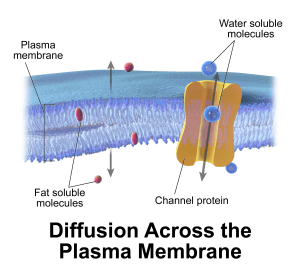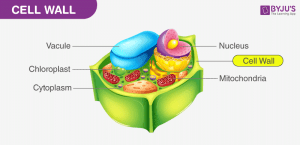Understanding Membrane Permeability and Cell Walls
Membrane Permeability is a key aspect of cellular biology that explains how substances move across the plasma membrane, ensuring the proper functioning of cells. In this article, we will dive into the intricacies of membrane permeability, how the structure of the plasma membrane dictates selective permeability, and the role of cell walls in supporting cells. Whether you are studying biology or just curious about how cells interact with their environment, this comprehensive guide will help you understand these vital concepts.
What Is Membrane Permeability?
Membrane permeability refers to the ability of a cellular membrane to allow specific molecules to pass through it while preventing others from crossing. This selective permeability is essential for maintaining the internal environment of the cell and regulating the transport of nutrients, ions, and waste products. Thanks to the unique structure of the phospholipid bilayer, membranes allow only certain substances to enter or exit.
The phospholipid bilayer is made of two parts:
Hydrophilic Heads: These heads are made of a phosphate group and love water, which means they face both the inside and outside of the cell where water is present.
Hydrophobic Tails: These are composed of fatty acids and hate water, so they face inward, away from water.
The structure of the plasma membrane allows it to act as a barrier, effectively separating the internal cellular environment from the external one, and providing selective permeability that determines what can pass through.
What Molecules Can Cross the Plasma Membrane?
Depending on the molecule’s properties, it might freely cross the plasma membrane or require help to do so:
Small, Non-Polar Molecules: Molecules like nitrogen (N2), oxygen (O2), and carbon dioxide (CO2) can easily pass through the plasma membrane. These molecules are non-polar, allowing them to move freely across the hydrophobic fatty acid tails of the bilayer.
Polar or Charged Molecules: Molecules that are polar or charged require a transport protein to cross the membrane. These proteins are essential for moving ions or larger molecules across the barrier since the hydrophobic tails repel anything that carries a charge.
Water Molecules: Even though water is polar, it is small enough to pass through the membrane in small quantities. However, larger amounts of water require specific transport proteins called aquaporins.
The plasma membrane is designed to allow selective permeability. This means some substances, such as small non-polar molecules, can cross easily, while others require specific proteins to assist in their transport.
| Requires Transport Protein | Can Freely Cross Membrane |
|---|---|
| Large Molecules | Small Molecules |
| Polar (hydrophilic) | Nonpolar (hydrophobic) |
| Ions | Noncharged Molecules |
The Role of Transport Proteins

Transport proteins play a crucial role in enabling molecules that cannot freely cross the plasma membrane to enter or exit the cell. These proteins are embedded in the membrane and act as channels, pumps, or carriers to help specific molecules get across.
Channel Proteins: Form open passageways through which certain molecules can flow. For example, ions or water molecules can pass through channel proteins in a process known as facilitated diffusion.
Carrier Proteins: Bind to molecules and change their shape to shuttle them across the membrane.
Pumps: Actively transport substances against their concentration gradient using ATP energy. These pumps help maintain cellular homeostasis.
Cell Walls: Structure and Function
In addition to the plasma membrane, some cells have cell walls that act as a protective boundary and provide structural support. Cell walls are essential for maintaining the shape and strength of cells, particularly in plants, fungi, protists, and bacteria.

Cellulose: In plant cells, the cell wall is made of cellulose, a complex carbohydrate that provides rigidity and strength.
Chitin: In fungi, cell walls are made of chitin, which is a type of polysaccharide that also adds structure and protection.
The cell wall helps cells to maintain their shape, resist physical stress, and prevent over-expansion when water enters the cell. This makes cell walls essential for plant cells, which are exposed to different environmental pressures compared to animal cells.
Membrane Permeability and Cell Function
The selective permeability of the plasma membrane is crucial for various cellular functions, including nutrient uptake, waste removal, and maintaining ion concentrations. The hydrophobic fatty acid tails within the bilayer act as a gatekeeper, repelling hydrophilic substances and allowing only non-polar, small molecules to diffuse through easily.
The selective nature of the membrane is also why membrane permeability plays such an important role in cell signaling, communication, and maintaining cellular homeostasis.
Key Takeaways
Membrane permeability refers to the selective nature of the plasma membrane, allowing some molecules to pass through freely while others require assistance.
Phospholipid bilayer structure consists of hydrophilic heads and hydrophobic tails, providing a basis for selective permeability.
Transport proteins, such as aquaporins and channel proteins, help polar, large, or charged molecules cross the membrane.
Cell walls, found in plants, fungi, and some protists, provide structural support and are composed mainly of cellulose or chitin.
Understanding these aspects of cellular biology helps explain how cells interact with their environment, manage nutrient flow, and maintain the internal conditions necessary for life.
Final Thoughts
The plasma membrane and cell wall are integral parts of cellular life that ensure a stable internal environment, provide structure, and regulate interactions with the surroundings. By understanding how selective permeability works and why cell walls are essential in some organisms, you can gain a deeper appreciation for the remarkable capabilities of cells. Keep these concepts in mind as you explore the incredible world of cellular biology.
Learn More at Slyacademy.com
Explore more in-depth articles on cellular structures, biological functions, and more at Slyacademy.com. Our resources are designed to help you ace your AP Biology course and gain a deeper understanding of the amazing world of cells!







